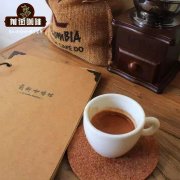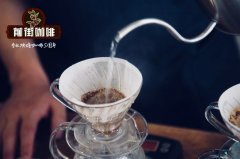Introduction to the coffee flavor of Yega Sheffielia water washing station

Professional coffee knowledge exchange More coffee bean information Please pay attention to coffee workshop (Weixin Official Accounts cafe_style)
About
Biloya washing station
Ethiopia's smallest administrative division is kebele, a land inhabited by at least 500 families. Biloya is one such kebele, belonging to the Kocher district, a few miles south of its famous Yegashefi region.
Biloya washing station is geographically very close to the Yegashefi region, both geographically and demographically very similar to the Yegashefi region. The coffee farmers at Biloya washing station are mostly Protestant Christians who live on small plots averaging 1 hectare and specialize in coffee cultivation. While the Gedeo people share some cultural similarities with the larger Oromo group, they have their own distinct culture and language.
The washing station was founded more than 20 years ago, but it wasn't until 2018 (bought from its founder) that it began to be managed by Tracon. "There's room for more coffee here," said Ahmedin Rees, the site manager in charge of Biloya's washing station. "Farmers have a lot of coffee and to meet this demand we plan to increase the number of sunbeds by 30 percent this year from 150," he added. The goal is to slowly double the capacity of washing stations over time.
Biloya washing station process
Like most farmers in this part of Ethiopia, coffee farmers near the Biloya washing station grow other crops, such as corn. The hills of the area are naturally forested, and endemic trees provide plenty of shade needed to ensure that Arabica coffee grows well here.
During harvest season (October to mid-January), farmers selectively pick red cherries from trees and send them to washing stations-some in large batches, some in small batches. Each bag of coffee received at the station is visually inspected to ensure that only red cherries are processed.
Once accepted, the cherries begin the washing process. The Biloya washing station uses water from the nearby Bond River, which is regularly monitored and cleaned. After washing and drying, the coffee enters Tracon's warehouse and processing facility in Addis Ababa for final sorting and processing before export.
"The people here are innocent, but wary of newcomers," said Ahmedin, a local Gedeo farmer from nearby Biloa. Washing stations are building community trust in a number of ways, including by offering loans. Most farmers only charge for coffee once a year, so the site offers loans to needy farmers who can repay their loans with coffee during harvest season. Despite income volatility, this gives small farmers some financial stability and helps them focus on caring for their coffee trees.
Biloya washing stations encourage farmers to send the best coffee to the station and offer incentives and rewards to farmers with the best coffee quality. In addition, the station's management is working with its parent company Tracon to provide much-needed electricity to coffee growers in Biroa.
END
Important Notice :
前街咖啡 FrontStreet Coffee has moved to new addredd:
FrontStreet Coffee Address: 315,Donghua East Road,GuangZhou
Tel:020 38364473
- Prev

What are the three varieties of coffee beans? what is the relationship between Arabica and iron pickup?
Professional coffee knowledge exchange more coffee bean information please follow the coffee workshop (Wechat official account cafe_style) front street-coffee varieties, iron pickup coffee varieties introduction Arabica Arabica beans are an important kind of commercial coffee, the result period is less than three years, with high-quality aroma and sour taste. Arabica coffee accounts for 75% or 80% of all coffee. The world is famous
- Next

Taste characteristics of Yejashefi biloya Coffee correctly drinking Faye Xuefei biloya Coffee
Professional coffee knowledge exchange more coffee bean information please pay attention to the coffee workshop (Wechat official account cafe_style) Biloya washing station was built in 2001, processing nearly 1 million kilograms of coffee fruit from 211 small farmers every year. There are 138 raised drying beds on 2.5 hectares of land. When ripe cherries arrive, they are sorted by hand to separate less dense cherries.
Related
- Beginners will see the "Coffee pull flower" guide!
- What is the difference between ice blog purified milk and ordinary milk coffee?
- Why is the Philippines the largest producer of crops in Liberia?
- For coffee extraction, should the fine powder be retained?
- How does extracted espresso fill pressed powder? How much strength does it take to press the powder?
- How to make jasmine cold extract coffee? Is the jasmine + latte good?
- Will this little toy really make the coffee taste better? How does Lily Drip affect coffee extraction?
- Will the action of slapping the filter cup also affect coffee extraction?
- What's the difference between powder-to-water ratio and powder-to-liquid ratio?
- What is the Ethiopian local species? What does it have to do with Heirloom native species?

